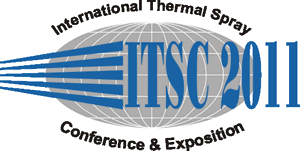
|
| Abstract No.: |
|
| Title: |
Three anodes compared to three cathodes: Evaluation of gun concepts for high performance plasma spraying operation
|
|
| Authors: |
Martin Erne / Leibniz Universität Hannover -
Institut für Werkstoffkunde, Deutschland
Daniel Kolar / Insitute of Materials Science, Leibniz Universität Hannover, Germany
Kai Möhwald/ Insitute of Materials Science, Leibniz Universität Hannover, Germany
Friedrich-Wilhelm Bach/ Insitute of Materials Science, Leibniz Universität Hannover, Germany
|
|
| Abstract: |
In plasma spraying operations, where high throughput is intended, three cathode guns are a supposable solution. Due to their stationary plasma jet and elevated power characteristics, higher feeding rates concurrent with sufficient deposition efficiencies can be realized compared to one-cathode plasma guns. On the contrary to those well-established equipments a newly marketable system uses three anodes to combine high power inputs into the plasma as well as stable process conditions. Due to the concept of one plasma arc in the cascade part of the gun a smaller anode nozzle diameter of 7 mm can be realized resulting in high plasma velocities. Besides this aspect the gun provides the opportunity to make use of hydrogen as secondary gas instead of helium, both resulting in differing gun characteristics.
This workings deal with the differences in the designs of one three-cathode and the named tree-anode gun concepts and the resulting process characteristics. With both equipments NiCr and Al2O3 feedstock where conventionally plasma sprayed and the deposition efficiency, the microhardness and the porosity of the coatings are characterized in detail for different operating conditions. Further on attachments where designed to supply shrouding gases, both for spraying reactive materials like titanium in a more inert atmosphere by using argon, as well as nitrogen for achieving hard phase contents in the coating. Furthermore the processing of suspension with both concepts was examined and the resulting coating characteristics are compared.
|
|
